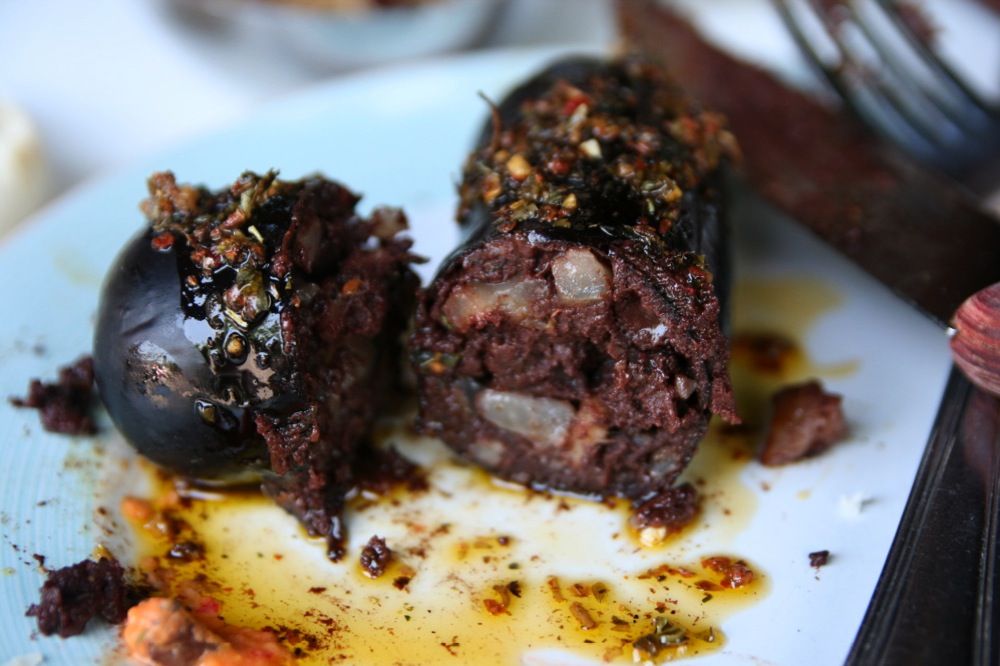A look at how different cultures cook with the most primal of ingredients
While most people profess a certain squeamishness when confronted with blood, cooking with the blood of animals is ingrained in humans and present in most cultures. Humans originally bled animals immediately after killing them, as a method of preserving the meat. If blood stays in the animal after it is slaughtered, it will sour the meat and spoil it. But rather than throwing away the blood, the first enterprising cook must have realised that blood has its own prized properties in the kitchen, such as being an effective thickener for soups, stews and sauces, a filler for sausages and quite simply, a flavour enhancer. In some cultures, such as the Maasai warriors in Kenya and Tanzania, blood is also seen it as a sort of medicine. They give it to women who have just given birth and is also supposedly a traditional hangover cure, either straight or mixed with milk.
This link to our ancestors still persist to the modern day and even in a city as modern and cosmopolitan as Hong Kong, dishes made with blood are present at every turn. Asia Tatler Dining looks at some of the best dishes made with this primal ingredient.
Black Pudding
Black pudding or blood pudding is one of the most commonly known food made with blood. It is served throughout Europe but especially in Britain, where a full breakfast would not be complete without it. Usually made with pork blood, pork fat, oatmeal and onions, black pudding is really more of a sausage patty that is sliced and fried. In some parts of England, such as Lancashire in the northwest, black pudding is simply boiled and served with malt vinegar. One of our favourite places to enjoy this traditional breakfast treat is at the Mandarin Grill, where it is served as part of the Full English breakfast along with two eggs, a portabello mushroom, bacon, sausage and tomato.
 Canard Au Sang
Canard Au Sang
Known variously as canard a la presse, pressed duck or Caneton Tour d’Argent (named after the famed Parisian restaurant where the dish was revived in 1890), it is a French dish which uses the blood of a duck in the sauce as both a flavour enhancer and thickener. The process of making the dish may be a tad medieval and gruesome for our sanitised modern sensibilities as it involves strangling a young duck to retain its blood (rather than swiftly and mercifully slitting its throat). Its liver, legs and breast are then removed and cooked separately while the rest of the carcass (meat, bones, skin and all) are then put into a press, extracting all the blood. This is then used, along with the ground liver, to make a sauce. Naturally, the sauce is much more flavourful and “ducky” than a regular one made with just the bones would be, and one of the best places in Hong Kong to try this traditional dish is at La Brasserie in Tsim Sha Tsui where the staff will happily demonstrate the pressing process.
 Morcilla
Morcilla
In Spain and Latin America, one of the most widespread dishes made with blood is the morcilla sausage. Naturally, there are many regional variants: it is said that the most authentic variety is from La Mancha where the morcilla is made with pork blood, offal, paprika, onions and salt, while the morcilla de Burgos also includes rice, which gives it a completely different texture. In Galicia in the northwest, it is even sweet and served as a dessert. Just like black pudding, which is generally cooked or heated again, morcilla is a pre-cooked sausage and is only gently heated for the casing to get crispy before it is served, usually with bread and chimichurri. Tango Argentinian, the new Argentine steakhouse by Dining Concepts on Wyndham Street, offers morcilla sausage as a starter.
 Blood Tofu
Blood Tofu
Asians, especially the Chinese, are unjustly saddled with the reputation of eating everything from dogs to monkey brains; naturally blood is something that is seen as a typical, even commonplace ingredient. The main difference between the Chinese method of preparing and eating blood and the Western methods is that the Chinese prefer to serve it plain and congealed, with the silky texture of tofu. Rather than blending it with other ingredients and putting it into a sausage casing, the blood is simply congealed with a bit of water and salt, sliced into squares and cooked. The blood that is used is usually from a pig, cow, chicken or duck, although in the north, sheep goat or even yak’s blood is used. Here in Hong Kong, any traditional Cantonese restaurant will serve blood tofu (known here as “pig red” or “zhu hong”) stir-fried with chives. It is also commonly used as a condiment in congees, along with a helping of pig intestines.
